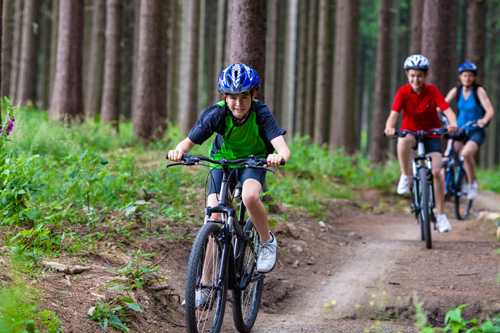Key Findings: Public Health Emergency Planning for Children

The journal Biosecurity and Bioterrorism has published a new study looking at the risks to children in chemical, biological, radiological, and nuclear (CBRN) disasters. Children have a number of unique characteristics that make them different from adults, and these differences may not be well understood by public health or emergency management professionals, or even clinicians. This paper reviews what we know about children’s physiology, social networks, and health and development, and relates these factors to what we know about the mechanics of CBRN incidents and the ensuing health effects. The authors found that in comparison to adults, children are at higher risk of exposure to hazards, are more susceptible to illness, and are more challenging to provide care for in CBRN emergencies. These findings might be useful for states and local public health programs drafting emergency response plans and messages, or for clinicians looking to integrate pediatric care into public health, hospital, or private practice emergency preparedness planning. You can read the article’s abstract here
Main Findings
- Children are unique from adults physically (in size and physiology), developmentally (behavior patterns and psychological stages of development), and socially (social patterns). Each of these differences may influence public health response actions and clinical care in CBRN emergencies.
- Children’s physical, developmental, and social characteristics often make them more vulnerable to infection and illness, and more difficult to diagnose and treat than adults in biological emergencies.
- Children’s physiology and psychological development put them at risk for more severe exposure to chemical agents than adults.
- Compared with adults, children’s bodies are more vulnerable to the blast and burn injury associated with bomb blasts, injuries made more dangerous when compounded with radiation injury. Additionally, children are particularly susceptible to the ill effects of a number of radionuclides, even more so than adults.
About this Study
- Children are designated as an “at-risk population” in public health emergency preparedness planning, often placing them in special processes outside of mainstream planning—and yet, children make up nearly 1 in 4 people in the United States. The goal of this paper is to illustrate the differences between children and adults in a manner useful to preparedness planning efforts for specific threats. This way, plans, tools, and messages developed by public health agencies or clinicians can include pediatric considerations from the beginning of the process rather than tacking on special considerations at the end.
- CBRN emergency is a term that includes chemical releases, biological agent releases, natural disease outbreaks, radiological releases, dirty bombs, and nuclear detonations. A CBRN emergency could be intentional (man-made) or unintentional (natural or technological) in nature.
More Information
- To learn more about caring for children in disasters, please visit http://emergency.cdc.gov/children
- To learn more about chemical emergencies, please visit http://emergency.cdc.gov/chemical/
- To learn more about biological emergencies, please visit http://emergency.cdc.gov/bioterrorism/
- To learn more about radiological and nuclear emergencies, please visit http://emergency.cdc.gov/radiation/
Key Findings Reference
Bartenfeld MT, Peacock G, Griese SE. Public Health Emergency Planning for Children in Chemical, Biological, Radiological, and Nuclear (CBRN) Disasters. Biosecur Bioterror. 2014 Jul-Aug;12(4):201-7.
- Page last reviewed: August 15, 2014
- Page last updated: August 15, 2014
- Content source:


 ShareCompartir
ShareCompartir